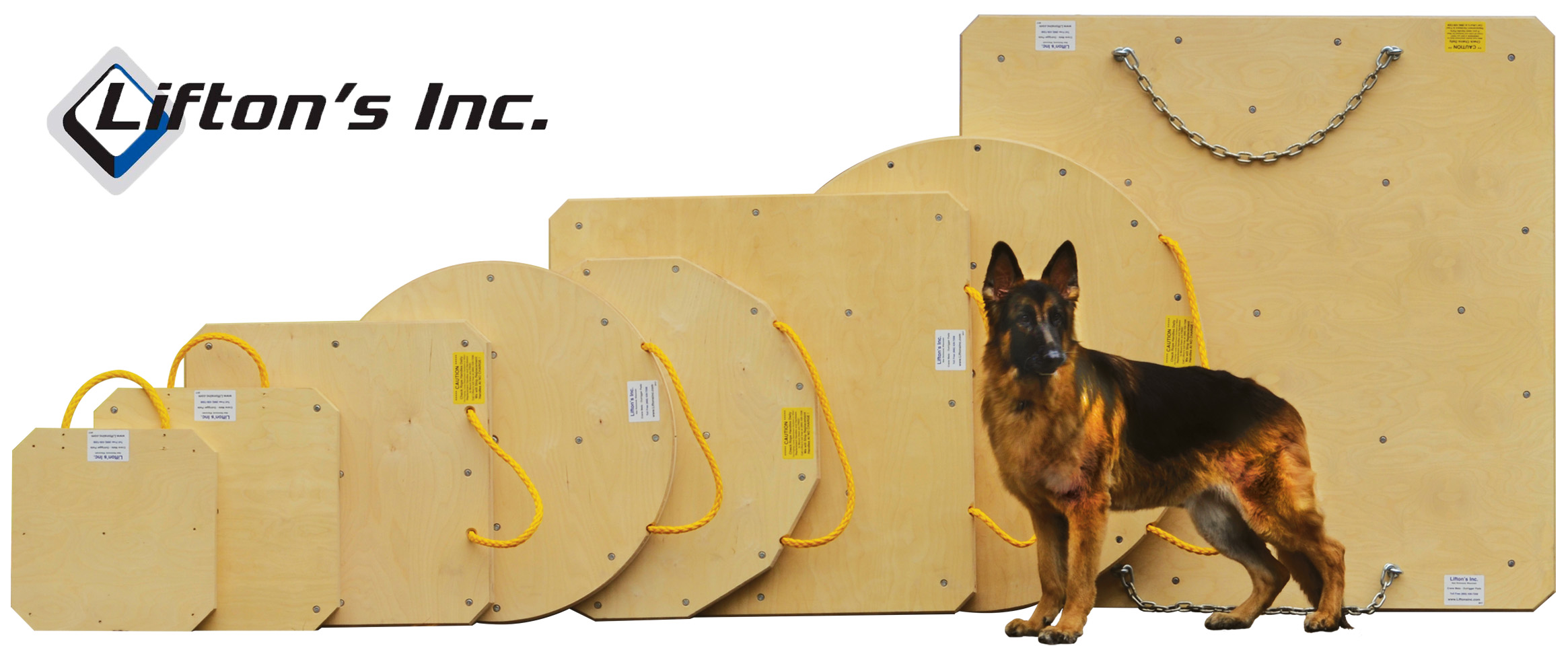Growing Your Own Pump Operator
GROWING YOUR OWN PUMP OPERATORS
On-the-job training is a common means of training or retraining workers and the practice may seem simple and straightforward. Doing it effectively however requires more thought and preparation than simply having someone follow an experienced worker around and watch what they're doing.
Over the years, various techniques and practices have evolved that pass on the skills and knowledge of a trainer or coach in a manner that leads an inexperienced trainee to really absorb the information being taught. On-the-job training thus becomes less a haphazard show-and-tell and more a real transfer of information.
It is likely that some form of on-the-job training (OJT) is being conducted at your workplace. The formality of that training can range from a structured program to an informal “follow Joe around” method. If your program is completely unstructured, it may not be meeting current training needs. Worse, it may perpetuate bad habits and create “trained” employees who are not given the same information or evaluated to the same standards. Wiehagen et al. comment that, “Success in using unplanned OJT is usually dependent on the luck of the draw, that is, whether the informal trainer is competent at the task he or she is teaching, is motivated to teach, can organize the job into logical components, and knows something about good practices in teaching and evaluating”.
It is only through planning a structured OJT program that consistency can be created and maintained. At the least, all trainees who have successfully completed such a program can be expected to perform at an established level—they will know what they must do to be successful
To establish a structured program, parameters must be set regarding issues such as who will conduct the training, what material will be covered, and how long training will last. In addition, the following topics should be considered. Each will be discussed in more detail in this guide
• The Supervisor. The supervisor manages the action part of the program and is the person responsible for overseeing the progress of the trainee. The supervisor—
Selects the coaches and provides on-going support for them. Determines the training plan for assigned trainees by identifying the knowledge and skills to be acquired and providing standardized task training materials to the coach. Pairs trainees with an appropriate coach or coaches. Evaluates the trainee’s proficiency and signs off when training is complete. Assesses the coach’s skill in transferring knowledge and skills to the trainee.
Initiates follow-up for each trainee.
• The Coach. The coach does the training. He/she is responsible for organizing and planning the training, developing a relationship with the trainee, and teaching knowledge and skills to the trainee.
The Trainee. The trainee is responsible for being an interactive learner, developing a relationship with the coach, and mastering the material taught. The primary work team in the coaching-based OJT program is the trainee, the supervisor assigned to oversee his or her training, and the coach or coaches who conduct that training
The relationship between the coach and the trainee is defined in either a written or verbal agreement. Both individuals understand and are committed to the goals, actions, and timeline of the process and understand their respective roles and responsibilities.
Working with supervisors for successful implementation
Supervisors play a key role in this OJT program. They select and review coaches. For each trainee assigned to them, they develop a plan with the knowledge and skills needed by that individual in mind. They match trainees to coaches to accomplish the goals set forth in the plans. It is the supervisor's responsibility to conduct an official evaluation to determine when trainees have achieved an acceptable level of performance.
Since OTJ is, by definition, taking place at a worksite, even supervisors who are not currently assigned trainees need to understand the importance of quality training and know how to support coaches and trainees. All supervisors should know any legal requirements and company policies requiring employee training before certain tasks can be performed. Training-related paperwork, even if it is to be completed by another supervisor or a coach, should be explained to all supervisors so they can review it if they ever have a question about the training status of any employee who reports to them.
OJT coaches can not be expected to fulfill their original duties at the same level of involvement while they are engaged in training activities. During that time, part of their job is to teach, not to produce. Supervisors need to understand how this short-term loss will be a long-term gain for the company through increasing the skills of new employees. New employees will become productive more quickly with effective training.
A difficult situation may be created if the new employee will not report to the coach’s supervisor. In these cases, it is particularly important that a supervisor believes a training-related slowdown will not have negative ramifications. Supervisors should be positively reinforced for supporting training that will contribute to overall organizational goals.
Supervisors will be overseeing the OJT worksite. They should communicate their support to OJT coaches and trainees and explain the importance of the program to their other workers. If an OJT program is being formalized for the first time, employees who were trained in less formal ways may not see why a change is needed. If other employees see training as a slowdown or something that negatively impacts their work, they may become resentful. If the supervisor is aware that this can happen, he or she is more likely to recognize developing situations and deal with them before problems become difficult. Regardless of the type of training being provided, supervisors have to manage new employees and employees who are new to given tasks. An effective OJT program will make this part of a supervisor's job easier.
The foundation of the program is its coaches. Coaches must know and be able to perform the jobs they are teaching and also know how to share their knowledge and skills with a novice. Choosing the right people to be coaches and then giving them the support they need is key to a successful program.
A person currently in the position is usually chosen as the trainer, and that person is generally expected to teach all aspects of the job. However, a supervisor should consider whether another employee could (or even should) teach some things to those new to a given job. For example, a mechanic who understands how a machine functions could teach equipment operators. The mechanic might be in the best position to explain how to do proper inspections and to advise the new operator about what should be done to keep the machine in good working order. In addition, using other coaches for parts of a trainee’s experience can lessen the workload on one coach and give a trainee different perspectives on new tasks.
Job expertise shouldn’t be the only consideration when selecting a coach. Personal characteristics are also important. James Leach (1996) reports that successful trainers will have “enthusiasm, humor, flexibility, and tolerance.” In discussions between coal miners and NIOSH staff about what makes a good trainer, the characteristic of patience was brought up often. Miners also said excellent trainers care about their trainees. It will be these kinds of qualitative differences that will set excellent coaches apart from adequate ones.
Some of the characteristics that make a good coach are (Leach, 1996)— Responsiveness Expresses interest in trainee, is a good listener, has good communication skills, accommodates individual differences, maintains relaxed manner, is receptive to questions. Enthusiasm. Is energetic, optimistic, prepared, willing to commit time. Humor; Able to incorporate humor in personal and real-life examples during training. Sincerity/honesty Takes every question seriously and doesn't pretend to know the answer if they don’t. Flexibility Able to eliminate, adjust, or alter material during training according to trainees' needs and/or time constraints. Tolerance Able to accommodate different personalities and learning styles; accepts constructive criticism and doesn't take it personally.
Employees selected as OJT coaches should be told what is expected of them and what they will get in return for taking on this role. Teaching can be intrinsically rewarding, but it can also be stressful. Since the OJT coach is a productive employee, he or she may feel pressured to continue producing at the same rate even when activities are being added to a workday. It is not possible for the individual to do both things at the same time with 100% efficiency and attentiveness. The production rate for the OJT coach will decrease when they are training, and they should be reassured that the coaching job is important and worth spending time to do well. It is likely, however, that OJT coaches will continue to be productive employees in terms of their original jobs as well as in their new roles. It is appropriate that they be given recognition and/or rewards for their extra efforts. In an effective OJT program, coaches know they are respected and appreciated.
One way to reward coaches is to institute an OJT coach certification. Certification would identify individuals who have been selected and prepared to conduct training. Preparation would include the content of the given job along with teaching and assessment skills. If the organization certifies employees as coaches, then training is less likely to become a “follow Joe around” experience. Once certified, however, the individual must be offered resources and support to be successful. They should also be given opportunities to improve their skills through additional education or refresher sessions. Another advantage to certification programs is that supervisors will know a certified OJT coach is qualified to prepare an inexperienced employee for a new task.
Trainees' role in on-the-job training programs
Trainees’ responsibility in the relationship
Trainees must be active participants in a coaching-based OJT program. They need to understand the importance of coaching and how it will benefit them. For the trainee-coach relationship to succeed, the trainee must be ready to learn, open to communicating honestly, and respectful of his or her assigned coach. Trainees who commit to the relationship and see training as an opportunity to increase their skills will be most successful. Supervisors should communicate trainee roles to each of them before training starts.
Setting trainee prerequisites
Some level of basic knowledge, and sometimes skill, is required before learning any new job. The prerequisites to the job should be determined and documented as part of the OJT program. Formalizing the prerequisites will give everyone an understanding of what is minimally expected of someone new to a given job. Trainers will be provided with a starting point, and trainees feel more confident knowing they have met certain standards. If trainees do not meet the prerequisites, what additional knowledge or skills they need before OJT begins will be clear.
Evaluating trainee performance
It is important to have some system in place to determine whether trainees have gained the knowledge and skills required to do the new job. Such a system should be thorough enough to gauge trainee success accurately, but not too cumbersome to use with ease. One method is to design checklists including each important task and/or subtask that should be reviewed. Checklists can be compiled while training content is being defined. It can be used as a guide to key points to be made during training, as well as an evaluation tool as training progresses.
One caution when setting up an evaluation system is that coaches and trainees must not think that "fully successful" is the only acceptable level of task performance. If that becomes the norm, trainers are likely to conduct an evaluation only when they are sure this goal will be met. A successful evaluation system allows trainees to learn from less-than-perfect performances and progress to eventual success in each task or subtask.
Supervisors should evaluate the performance of trainees and have final sign-off responsibility. Successful training cannot take place, however, without the coach assessing performance either formally or informally as training progresses. Additional people who might evaluate trainees are other employees who have expertise in the job for which workers are being trained or safety department employees. However, no matter who evaluates trainees, the same method should be used each time. Trainees should always know who will be evaluating their performance and what knowledge and/or tasks will be reviewed.
Granting company certifications to trainees
Certification can be a means of identifying employees with given knowledge and skills. Certification is useful when a quick assessment of people who can do certain tasks is needed. If a company certification system is put in place, however, a decision must be made as to whether individuals currently in the job will be certified or whether those individuals should be evaluated in the same manner as new workers who are taking specific training.
If a certification program is put into place, then OJT coaches should become certified before teaching others. Coaches then have the experience of going through an evaluation from a trainee’s perspective and a chance to become familiar with the training process. In addition, certifying OJT coaches demonstrates to trainees that the coaches have proven their abilities in the job being taught.
Written By Bob Sanderson Published by ConcretePumping.com




















.jpg)
.gif)

.jpg)








.jpg)









